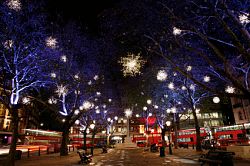

Official figures suggest, that New Year's Eve fireworks contributed to dangerously high levels of particulate matter (PM) pollution in several German cities.
The firework displays for the New Year's celebration resulted in release of some 4,000 tonnes of PM into the atmosphere. In Munich, the PM pollution reached levels around 26 times of the EU-recommended restriction of 50 micrograms of particulates per cubic metre of air per day and the worst reading reached 1,346 micrograms of particulates per cubic metre of air. These levels equate to approximate of 15% of annual vehicle emissions of PM.
In the UK, the worst night for fireworks was the Guy Fawkes Night in 2014, where the air pollution reached the top level of 10 on the UK scale across the West Midlands, Merseyside, Manchester and Yorkshire.
Fireworks not only emit particles, during combustion process a variety of hazardous substances is released, such as metal ions (magnesium), nitrogen dioxide and sulphur dioxide.
Airborne particulates of smoke or soot are linked deaths due to respiratory illnesses.